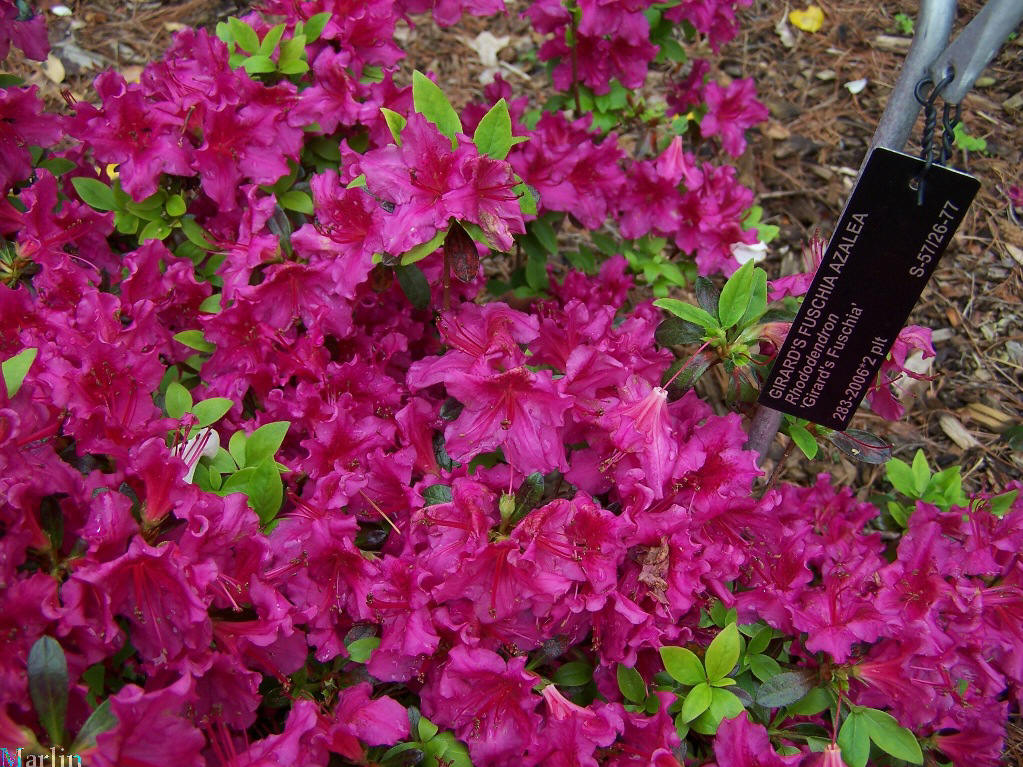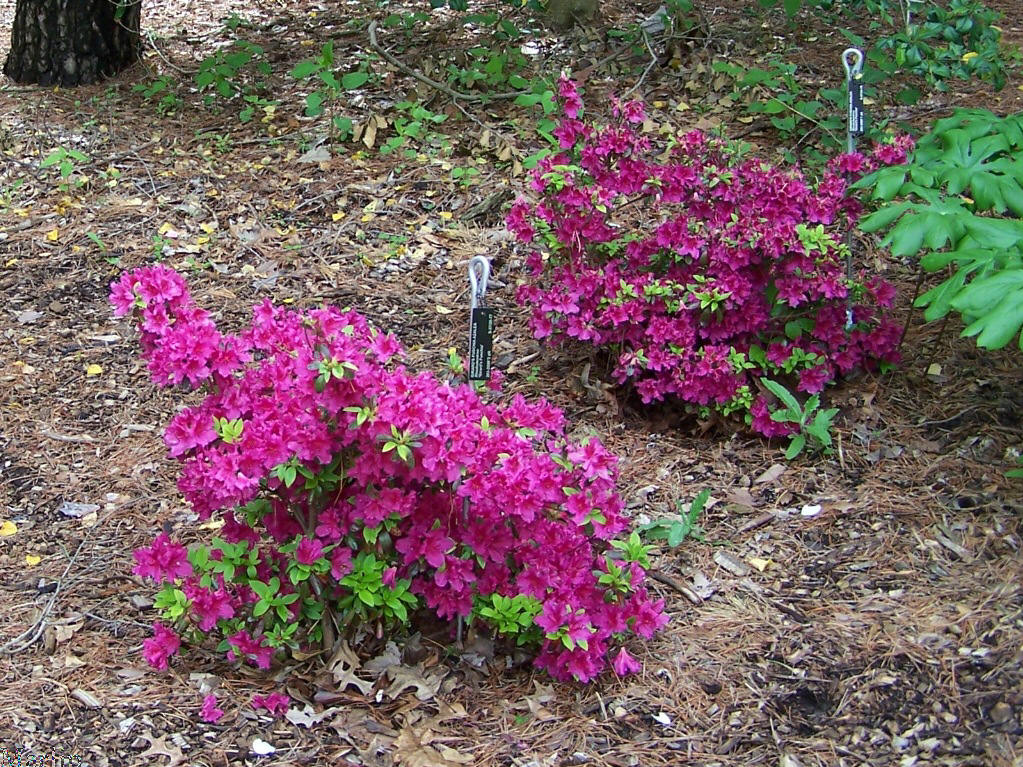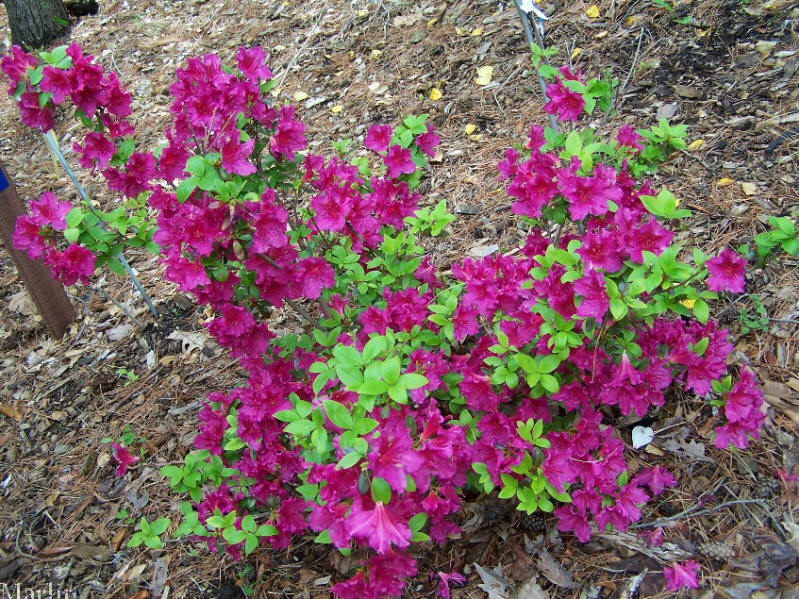Girard’s Fuschia Azalea

Rhododendron (from the Greek: rhodos, “rose”, and dendron, “tree”) is a genus of flowering plants in the family Ericaceae. It is a large genus with over 1000 species and most have showy flower displays. It includes the plants known to gardeners as azaleas.
The Rhododendron is a genus characterized by shrubs and small to (rarely) large trees, the smallest species growing to 10-100 cm tall, and the largest, R. giganteum, reported to over 30 m tall. The leaves are spirally arranged; leaf size can range from 1-2 cm to over 50 cm, exceptionally 100 cm in R. sinogrande. They may be either evergreen or deciduous. In some species the underside of the leaves is covered with scales (lepidote) or hairs (indumentum). Some of the best known species are noted for their many clusters of large flowers. There are alpine species with small flowers and small leaves, and tropical species such as section Vireya that often grow as epiphytes.

Girard’s Fuschia as low shrubs add hardy color to any garden. These specimens are planted in a forest glade, in dappled shade.
Both species and hybrid rhododendrons (including azaleas) are used extensively as ornamental plants in landscaping in many parts of the world, and many species and cultivars are grown commercially for the nursery trade. Rhododendrons are often valued in landscaping for their structure, size, flowers, and the fact that many of them are evergreen. Azaleas are frequently used around foundations and occasionally as hedges, and many larger-leafed rhododendrons lend themselves well to more informal plantings and woodland gardens, or as specimen plants. In some areas, larger rhododendrons can be pruned to encourage more tree-like form, with some species such as R. arboreum and R. falconeri eventually growing to 10-15 m or more tall.
Rhododendrons are grown commercially in many areas for sale, and are occasionally collected in the wild, a practice now rare in most areas. Larger commercial growers often ship long distances; in the United States most of them are located on the west coast (Oregon, Washington and California). Large-scale commercial growing often selects for different characteristics than hobbyist growers might, such as resistance to root rot when over-watered, ability to be forced into budding early, ease of rooting or other propagation, and saleability.

Like other ericaceous plants, most rhododendrons prefer acid soils with a pH of roughly 4.5-5.5; some tropical Vireyas and a few other rhododendron species grow as epiphytes and require a planting mix similar to orchids. Rhododendrons have fibrous roots and prefer well-drained soils high in organic material. In areas with poorly-drained or alkaline soils, rhododendrons are often grown in raised beds using mediums such as composted pine bark. Mulching and careful watering are important, especially before the plant is established.
There are a number of insects that either target rhododendrons or will opportunistically attack them. Rhododendron borers and various weevils are major pests of rhododendrons, and many caterpillars will attack rhododendrons. Major diseases include Phytophthora root rot, stem and twig fungal dieback; Ohio State University Extension provides information on maintaining health of rhododendronsRhododendrons can easily be suffocated by other plants.Rhododendron species are used as food plants by the larvae of some members of the Order Lepidoptera. [1]
References
- ASPCA, Animal poison control Toxic plant list
- Kenneth Cox, Rhododendrons & Azaleas: A Colour Guide (Crowood Press, 2005)
- Sonja Nelson, Rhododendrons in the Landscape (Timber Press, Incorporated, 2000)
